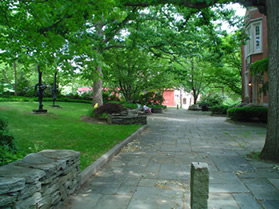 In the past two decades, institutions of higher education have broadened their role as stewards of the environment. Across the nation, universities are setting the benchmark for environmental stewardship by establishing broader policies and adopting appropriate practices for both long-range planning and day-to-day operations. In learning from what they teach and how they lead, universities have truly become the role model for a larger society.
In the past two decades, institutions of higher education have broadened their role as stewards of the environment. Across the nation, universities are setting the benchmark for environmental stewardship by establishing broader policies and adopting appropriate practices for both long-range planning and day-to-day operations. In learning from what they teach and how they lead, universities have truly become the role model for a larger society.
The motivations for institutional transformation extend above and beyond a commitment to stewardship. The University of Connecticut’s experience illustrates how policy decisions on environmental sustainability are influencing institutional behavior. Specifically, the University’s Sustainable Design Guidelines were designed to augment LEED as a sustainability benchmark.
These guidelines have since been updated to include provisions for any new building construction or renovation project entering the pre-design planning phase, shall establish the Leadership in Energy & Environmental Design (LEED) Silver rating as a minimum performance requirement. This Sustainable Design and Construction Policy was adopted in March 2007.
The final phases of UConn’s $2.3 billion facility improvement investment will add over 1.2 million GSF in new construction and renovate over 600,000 GSF of real estate across its eight campuses by year 2014. Recognizing the environmental impact associated with such phenomenal growth, UConn’s leadership has emphasized a strong sustainable ethic in implementing the program vision.
The University’s President created the office of, and appointed a Director of Environmental Policy to lead its environmental stewardship efforts. The new office formed the Environmental Policy Advisory Council, a senior advisory group to provide oversight and engage the campus in a dialogue on environmental stewardship, sustainability, and leadership. In order to develop and implement the first University-system wide sustainability initiatives, the council drafted an Environmental Policy Statement and assigned specific responsibilities to three sub-committees to pursue focused sustainability assessments and initiatives.
Today, UConn’s commitment to sustainable campus development is holistic. Its experience illustrates a truly collaborative process of transformation; focusing on consensus building and in actively engaging the faculty and student body to harness the expertise offered. Guided by a comprehensive Plan of Conservation and Development, UConn’s primary tools for sustainable campus development are its environmental policies, development framework and
UConn is changing. From the design of the first university athletic facility in the country to aim for LEED certification, localized stormwater management approaches to innovative water conservation strategies in the University’s poultry farms, the paradigm shift is evident. Together, these projects have embraced and broadened the structure and goals of LEED in advancing UConn’s sustainability mission, facilitating future projects to adopt LEED and filled in the gaps in campus development as yet unaddressed.